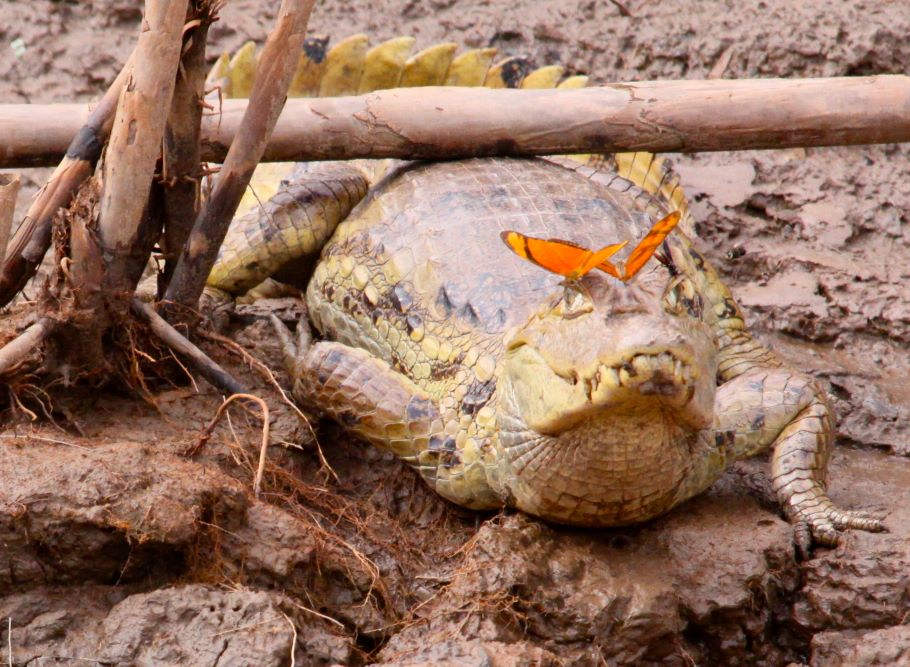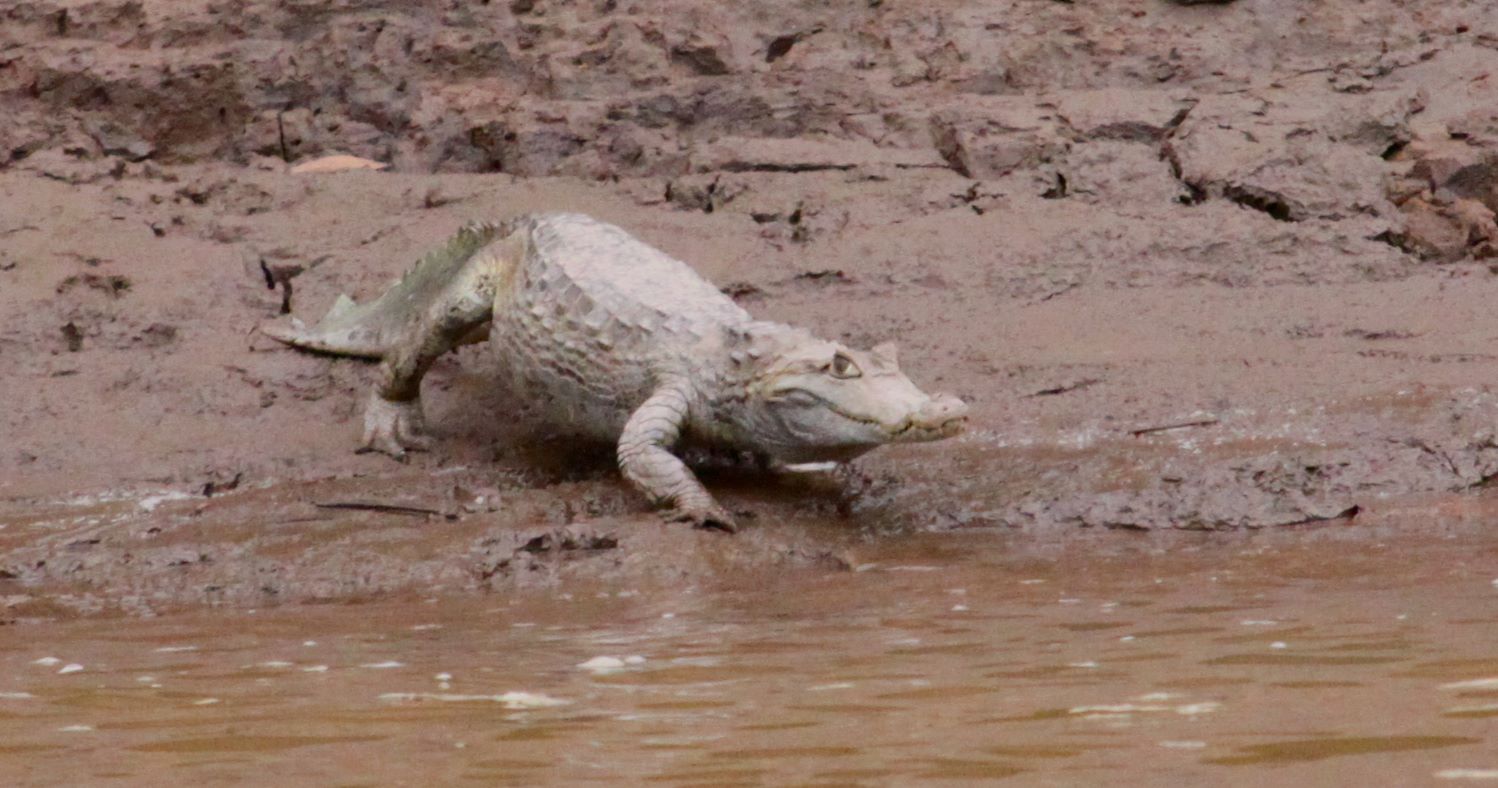General information
- Genus: Caiman
- Species: Crocodilus
- Also known as: Common Caiman, White Caiman
- Subspecies of Spectacled Caiman: C. c. crocodilus, C. c. apoporiensis, C. c. yacare and C. c. fuscus
- Average length: Males: 2 – 2.5m (6.6 – 8.2 ft.) and females: 1.4 m (4.6 ft.)
- Adult weight: 7 – 40 kg (15 – 88 lb.)
- Diet: Fish (including piranhas), amphibians, reptiles, water birds and larger prey such as capybaras and deer. Reports of cannibalism (see below). Juveniles and smaller individuals eat insects and molluscs.
- Natural predators: Larger caimans. Nest predators include lizards.
- Life span in the wild: Unknown
- Clutch size: 14 – 40 eggs (average of 22)
- Natural habitat: Extremely adaptable, practically any lowland wetland or river habitat within its geographical range though prefers still water. Can tolerate certain degree of salinity.
- Geographical range: From Southern Mexico, throughout Central America and South America down to central Brazil and northern Bolivia
Interesting Spectacled Caiman facts
- The “spectacled” part of its name comes from the bony ridge between its eyes that makes it look like it is wearing spectacles.
- They have 72-78 teeth!
- Young Spectacled Caimans are yellow with black spots and bands and gradually lose these colourings as they get older to become dull olive green.
- There are six species of caimans and four of these occur in the Tambopata rainforest. The most often seen here are the Spectacled Caiman and the larger and darker-coloured Black Caiman.
- Cannibalism has been reported of smaller caimans in the dry season when food is scarcer (most feeding is in the wet season)
- Less dominant Spectacled Caimans grow less quickly than more dominant ones due to stress and often do not get the chance to breed.
- Females sometimes share nests and may look after different families’ babies.
- They have the widest geographical distribution of any member of the Alligatoridae family (includes alligators – endemic to the U.S. and China – and caimans – endemic to Latin America)
- This species of caiman used to be considered Threatened by conservation assessments because of commercial hunting. It has made a comeback thanks to conservation efforts and because of this species’ adaptability to new environments once inhabited by other hunted species such as the Black Caiman.
IUCN conservation assessment
- Estimated world population: Probably in the millions
- Conservation status: Least Concern
- Population trend: Unknown
Sources
- Crocodile Specialist Group 1996. Caiman crocodilus. In: IUCN 2012. IUCN Red List of Threatened Species . Version 2012.2. Downloaded on 14 May 2013.

Spectacled Caiman with butterflies in Tambopata

Another Spectacled Caiman by the Tambopata River
